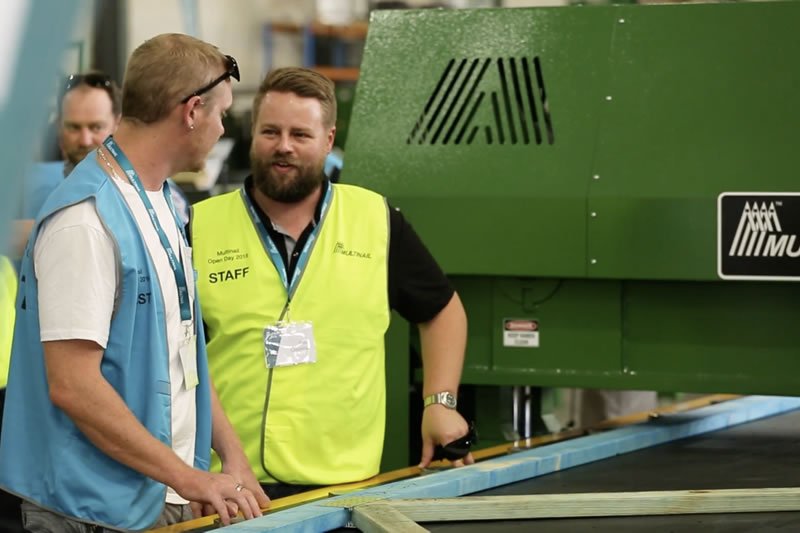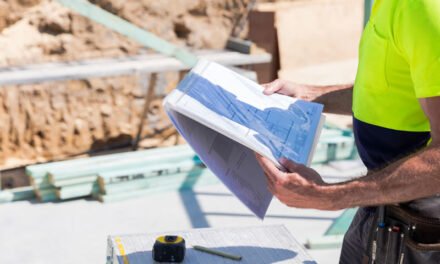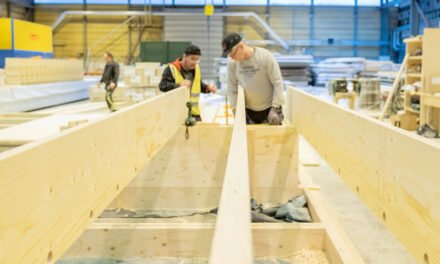Bringing in a new cutting saw – even a high-tech version – is a surprisingly straightforward experience but it succeeds or fails based on the quality of service.
March saw a gathering of fabricators and other timber specialists at Multinail’s Stapylton headquarters to watch some of the company’s best machines being put through their paces at a cutting show. The PieceMaker being used for demonstration had a prominent Westruss sign attached to it, and the Cheney family in the crowd cheerfully explained it would soon be making its way to their base in Orange, NSW.
Looking at the huge machine, it was hard to imagine it being packed up, shipped off and reassembled elsewhere as though it were little more complex than a bicycle. But the short version of the story is that’s exactly what happened, with the saw in operation within four days of delivery – one of the many PieceMaker machines that have been installed in the past 12 months.
But let’s hear the long story.
Early conversations
Westruss was Multinail’s first customer. “We were producing frames and trusses prior to Multinail,” says Leon Cheney, Westruss’s general manager. “When they bought out the company we’d been using from America, we translated over to them and we’re still with them, because their machines and service work well for us.”
When it came time to replace one of their older saws, Cheney’s wishlist was short and to the point. “We wanted a new saw that was going to increase production,” he says. Out of the range of available options, the PieceMaker stood out for its speed and capacity, so he put in an order.
First stop was sitting down with Wendy Boyd (Multinail’s NSW business development manager) and Tim Cosgrove (machinery technical support officer) to work out how to optimise the machine for Westruss. Every fabricator has their own way of working and a raft of details ranging from the physical constraints of a building to other machinery will impact how a new saw can best be set up to benefit the business.
“The design of the machine was arranged around our plant,” says Cheney. “They know our plant very well, where everything sits, so we just gave them an outline and the measurements of what we needed and they manufactured it to suit our requirements with regards to infeeds and outfeeds and all that sort of stuff.”
For new customers, Multinail provides a longer site visit and discussion of work practices to understand needs. Once an order is placed, the Stapylton manufacturing team build the actual machine and the support and technical staff formulate a plan for the next part of the process: putting the saw into operation as quickly as possible.
The installation team
Describing the installation process sounds simple, but only because of the complex planning that went into it. Packed onto one semi, the machine went from factory floor to productive cutting within a week.
From Cheney’s perspective, the new saw fit in smoothly. “The Multinail team spent three days putting it together and then after that it was just the training, plus the calibration, which was probably another day or two, and then it was up and running.
“We kept working while they were here. Nothing slowed us down, it was just another saw to go into place. The people they sent down were very good, very efficient. They got the job done perfectly and we didn’t have to worry about it after that.”
The team was carefully selected: Tim Cosgrove was in place to train the operators; Gavin Morom (NSW service technician) did the installation as well as worked on the commissioning; and Tony Walker (Factory Management System installation and IT field support) and technical support Officer Phill Coombs worked on setting up the saw files and networking, all with minimal disruption to Westruss’s output.
“The skills our floor staff had on the old machinery didn’t transfer across completely,” says Cheney, “but Multinail offered training in the new product before we put it into production, and they spent quite a lot of time on the floor with us.”
Elsewhere, the changeover was even easier. When it came to the office staff outputting data to the saw, Coombs and Walker worked to make sure there were effectively no differences in their operation.
“My role is to make the software that the guys use in the office talk to the saw,” says Coombs. “For me it’s about making that process seamless and free of downtime.”
Although the PieceMaker has a range of features that are more sophisticated than the saw it replaced, the differences are only apparent in the output on the factory floor.
“We talk to the factory staff and foreman early in the process and find out how they want to use the new saw and then my role is to make the software do what they need it to do,” says Coombs. “The guys who use the software don’t notice any difference, they still export the saw files from the software the way they always have, it’s just that the pieces of timber inside the saw files might come out in a different order to what they used to, depending on what they’re trying to do with the new saw.”
The PieceMaker cuts a lot faster than the old model. As Coombs explains, “Instead of having two saws to cut a job, they might decide they want to cut the whole job on this one saw, and what might have taken them four hours to cut on two saws, this new saw might be able to cut in two hours.”
The resulting difference in output is where the planning comes in. “You need to work a little bit backwards,” says Coombs, “because the guys who actually assemble the trusses want the pieces of timber to come out in a certain order and that can determine what order you want to cut them. I need to find out how the fabricator wants their timber grouped together and what sequence they want to cut it in, and then I can manipulate the settings in the software the guys use to design the roof trusses so that when they export a job to the factory, it comes out to the saw exactly how the fabricator wants it.”
Getting it right “comes down to the team taking the time to sit with the fabricators and talk about what they want to do and know which questions we should be asking,” Coombs says.
Maintaining the relationship
Placing the fabricator at the centre of the process is central to the success of the installation. Every fabricator is different and has their own way of working, so Multinail has made a point of using staff that have real-world experience and who can talk to fabricators in their own language.
“I worked closely with Tony Walker on the Westruss install,” says Coombs, “and I’m going to be working with him again when I go up to Tamworth in a couple of weeks to do another install. He’s our field technician for the factory software.
“Both of us come from the frame and truss industry, we’re both ex-detailers, so we’ve used detailing software – all the different software packages – quite extensively. I think Tony has worked in an actual factory, whereas I’ve only ever worked in the office. Both of us have good experience and knowledge of what happens in a frame and truss plant and what a fabricator is trying to do, and we can understand why they do certain things a certain way.”
After the initial installation, the team stayed on site to make sure things were working smoothly on the floor and train staff on minor regular maintenance as part of the broader maintenance program.
As Cheney explains, “We have a permanent monthly schedule with Multinail so they come down here and sort out our machines on a monthly basis. Most of the time it’s very standard and quite easy, just keeping an eye on things, making sure everything is working together properly and replacing parts as they become worn.”
The Preventative Maintenance Program is designed to minimise problems and is backed up by support staff who can be on-site quickly. Gavin Morom runs the program for Multinail’s NSW clients, alongside his technical support role. Wendy Boyd jokes that his job fits perfectly with his fondness for being behind the wheel – “Gavin loves a good drive and is often headed out in the early hours of the morning making his way to fabricators for a service or breakdown call.”
Trent Taylor, Multinail’s chief operating officer, says the company is committed to having parts readily available: “In this age of online, automation and robotics, I still believe you can’t beat boots on the ground support. We have a commitment to the frame and truss industry in Australia to supply world class technology, locally delivered and supported. Why would you import your most critical pieces of equipment?”
Already the team at Westruss has seen positive changes thanks to the impact of the PieceMaker. “We replaced four people operating in a different section with this machine,” says Cheney. “This saw has replaced three manual saws we had operating before. We’ve kept the staff members on and retrained them in different areas, so we can upskill them to new roles and help them develop, too.”
Despite the current economic downturn, for a company such as Westruss that can afford the investment, buying a new piece of major plant makes a lot of sense as new contracts are won on speed and precision.
Right now, Orange is still thriving. Cheney says, “It’s always been busy out here with the mines and the ag department, so the building out here has always been really good. And we supply all over the place, to the ACT, all over NSW. This new technology helps us to deliver.”
That’s music to Taylor’s ears. “Our job is to make our truss plants as productive as possible,” he says. “We’ve worked long and hard to provide a seamless installation and commissioning process for our fabricators. They’re up and running really quickly, everything has been done in the back end, and our Preventative Maintenance Program ensures things continue running optimally. The machine might be complex, but everything else should be simple.”











